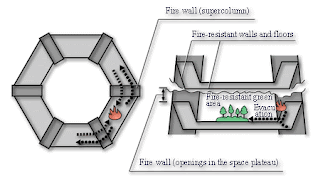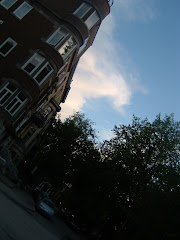I learned that many state-of-the-art engineering devices are used in superskyscrapers to cope with wind and earthquakes. But personally, in the terms of security, I do not place so much trust in technology. Simulation is simulation, after all. No one had ever imagined that an airplane would crash into the World Trade Center. No one predicted that asbestos would be so harmful to human body that it can cause deadly diseases to builders, residents and even tourists. In fact, according to Hans Netten, the editor of "The High-Rise Pages" (his website about skyscrapers), the collapse of high-rise towers due to natural disasters is occurring more often than we think. The sky may be the limit, "but who wants to live in a building 1 mile high?" Mir M. Ali, an architecture professor at the University of Illinois and author of "Art of the Skyscraper" says. I agree with him. He points out that the view from such a superskyscraper is not so good when you are surrounded by clouds. He also points to that a more realistic height would be around 150 stories and 2,000 feet.
"A skyscraper is a boast in glass and steel." is an aphorism by Mason Cooley (1927-2002, American aphorist). Super high-rises look like mutated freaks sprout in the middle of the city rather than buildings which shelter people. If I recognize the skyscrapers as a solution for anything, it is not for the accommodation space but for the green zones that is in critical shortage in urban areas. I might get a feel of relief in a construction which combines greens and reminds us of Mother Nature rather than a box made by concrete and steel. In this sense, the realization of Sky City 1000 is favorable for me if it really is a fusion of urban life and natural environment as the planner maintains.


No comments:
Post a Comment